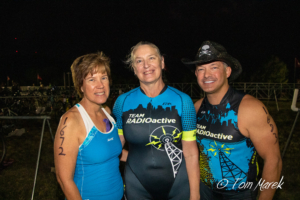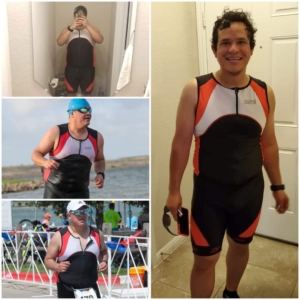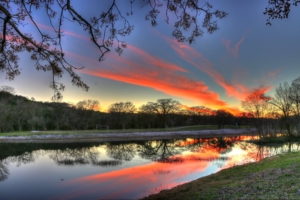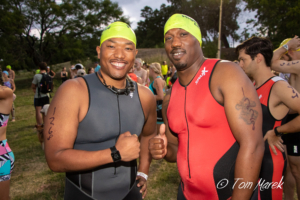Follow the 5 Fs of relay and start building your triathlon relay team
Triathlon is often a sport people become involved in as part of a life milestone or a personal goal. The discipline, training, and gear can be intimidating and overwhelming. But, there’s a less daunting entry point to triathlon for rookies. Build a triathlon relay team! The same applies to veterans who want to try longer distances or participate with friends and family. Building a triathlon relay team offers all of the race-day benefits with less training. Lindsey, CapTex Tri Ambassador, shared the following advice and explains why relay is the way to go. So read about the 5 Fs, share with your friends and family, and start building your triathlon relay team today.
The 5 Fs of creating a triathlon relay team
-
Fun

Create a relay team and you’ll have more time to cheer for everyone else.
Triathlon is one of the most grueling, yet most fulfilling athletic accomplishments. Sometimes the “fun” is in the “done.” However, having raced the full distance and 6 relays as the bike leg, I love to relay. Race day feels more relaxed to me and I really love participating with friends or family. I have the ability to compete without having to hold back and extra time to cheer for everyone else!
-
(F)Physical
The training required for three disciplines can be difficult and time-consuming. There might be bumps in the road due to physical limitations and/or injuries like these common foot problems triathletes experience. Perhaps you’re only comfortable with one or two disciplines due to your current skill level. Building a triathlon relay team is a great way to still race if instances like these occur.
-
Family/friends

Make new triathlon memories with your relay team.
I’ve raced with both of my kids since they were 8 and 10 years old. A triathlon relay team is a great way to be directly involved in sports with them. Over the years, the experiences and friendships I’ve had in the triathlon community are unique to being a part of relay teams. It’s even better when you sign up to relay with friends at the last minute or introduce a family member to triathlon by having them complete the leg their most comfortable with. Pro tip: if you’re the swim leg, learn how to find swim goggles that are right for you.
-
Fitness
Those new to triathlon often go for long-distance races as their goal. Relay provides a low-risk opportunity to find out what distance is the best fit for you. When your first race is a long-distance tri, a bad day or a DNF (did not finish) can leave you with a bad experience after investing so much. Fitting in the time to properly train can be challenging, but specializing in one leg is less time-consuming.
-
Finance

Save some cash when your team splits the event costs.
Triathlon is an investment of your time and finances. Joining a triathlon relay team is a great way to spend less time training and fewer dollars on gear, equipment, and coaching. Registration and travel can cost less when everything is split between the team. Gear costs could be cheaper when focusing on one discipline since you’re not purchasing items for swimming, cycling, and running. Additionally, joining a relay team can help first-timers learn about their new gear and become more comfortable with their discipline. Pro tip: if you’re the bike leg of your relay team, check out these bike buying dos and don’ts before you shop!
Triathlon has been a fun part of my life for eight years. Being on many triathlon relay teams has contributed to many of my great memories. I’ve seen it be a great opportunity for beginners to learn the sport or for veterans to introduce themselves to a new distance. As more people start swimming, cycling, and running to improve their health, creating a relay team is the best introduction to triathlon.






 The popular destination triathlon, known for its scenic views and fun atmosphere, is expecting record numbers that could see the event sell out. Participants are encouraged to register before the
The popular destination triathlon, known for its scenic views and fun atmosphere, is expecting record numbers that could see the event sell out. Participants are encouraged to register before the 












 “We can’t wait to be back to racing and spending time with the endurance sports community,” said Ryan Dolan, President of Zone3 USA. “High Five Events has produced high-quality, community-based events for a long time and we’re excited to partner with them for CapTex Tri and Kerrville Triathlon.”
“We can’t wait to be back to racing and spending time with the endurance sports community,” said Ryan Dolan, President of Zone3 USA. “High Five Events has produced high-quality, community-based events for a long time and we’re excited to partner with them for CapTex Tri and Kerrville Triathlon.”